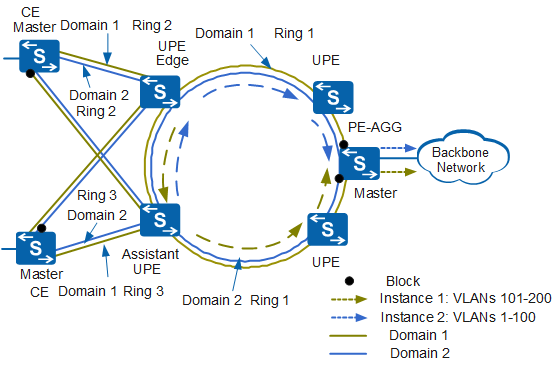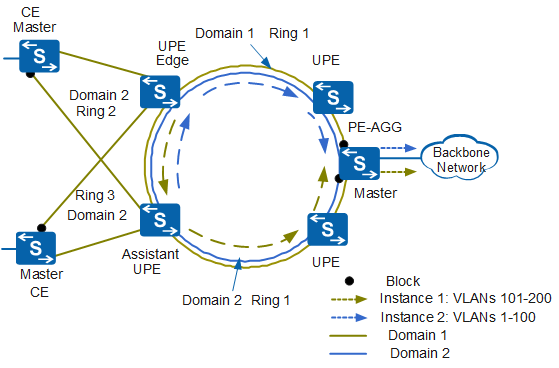Application of Intersecting RRPP Rings of Multi-Instance on a MAN
In Figure 1, Customer Edges (CEs) are dual-homed to Underlayer Provider Edges (UPEs) and two RRPP rings are formed.
In Figure 1, four UPEs and one PE-AGG construct a ring and RRPP multi-instance is configured on the ring. Traffic on the RRPP ring flows into the backbone network through the PE-AGG.
Two RRPP rings are configured on the four UPEs and the PE-AGG: ring 1 in domain 1 and ring 1 in domain 2. Domain 1 processes data in VLANs 101 to 200 and domain 2 processes data in VLANs 1 to 100.
Four RRPP rings are configured on the two CEs and two UPEs: ring 2 in domain 1, ring 2 in domain 2, ring 3 in domain 1, and ring 3 in domain 2.
RRPP rings provide master/slave protection and load balancing for the Layer 2 services in VLANs 1 to 200. When all the nodes and links on the rings are working properly, traffic sent to sub-rings is transmitted along different paths according to the service VLAN, implementing load balancing.
However, CEs may not support RRPP multi-instance, like the example shown in Figure 2. The major ring constructed by four UPEs and one PE-AGG belongs to multiple domains; however, the sub-rings constructed by CEs and UPEs belong to only one domain. Load balancing is not implemented on the sub-ring, and data in all VLANs is transmitted along the same path on the sub-ring. After entering the major ring, the traffic sent to sub-rings is transmitted along different paths according to the service VLAN, implementing load balancing.

